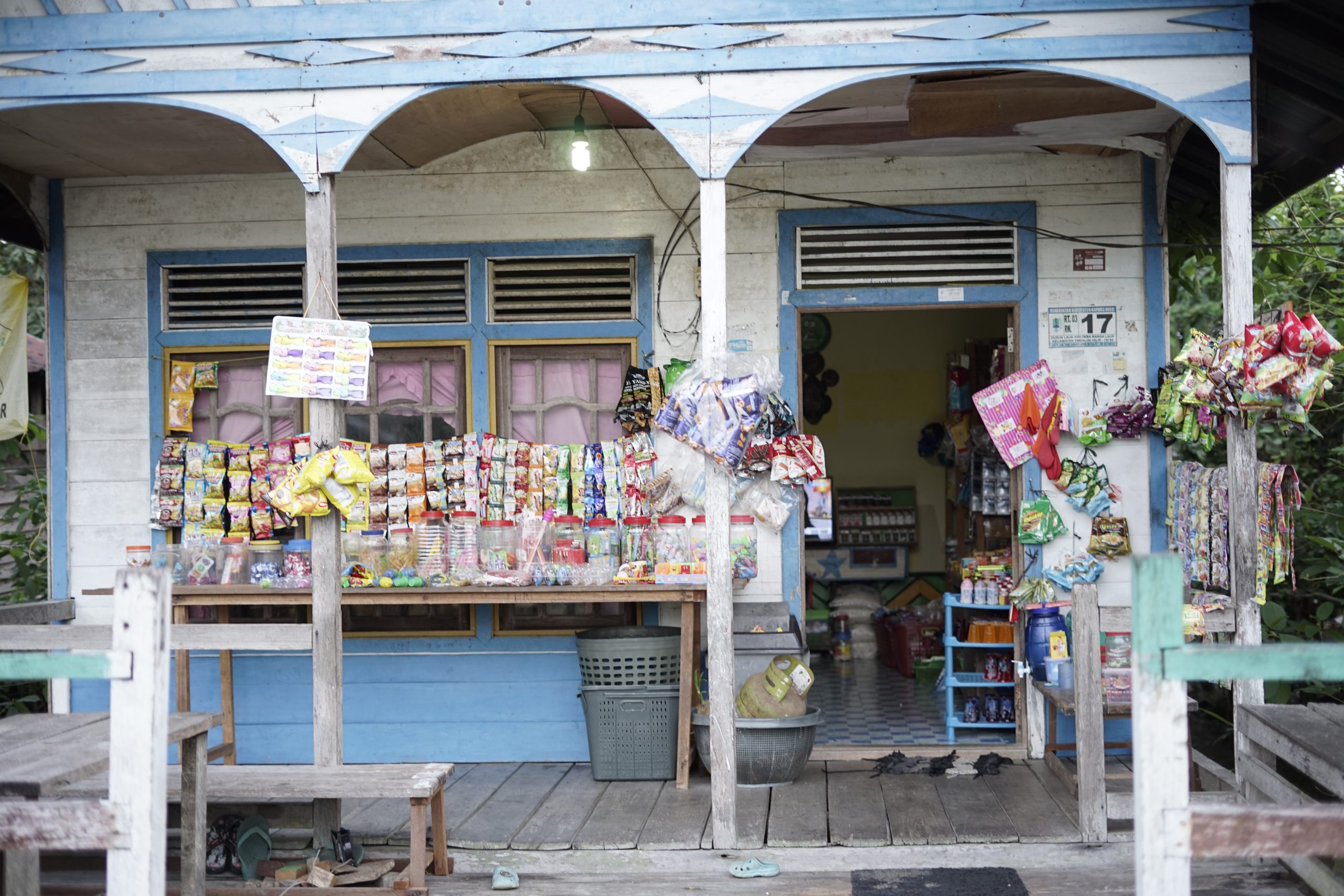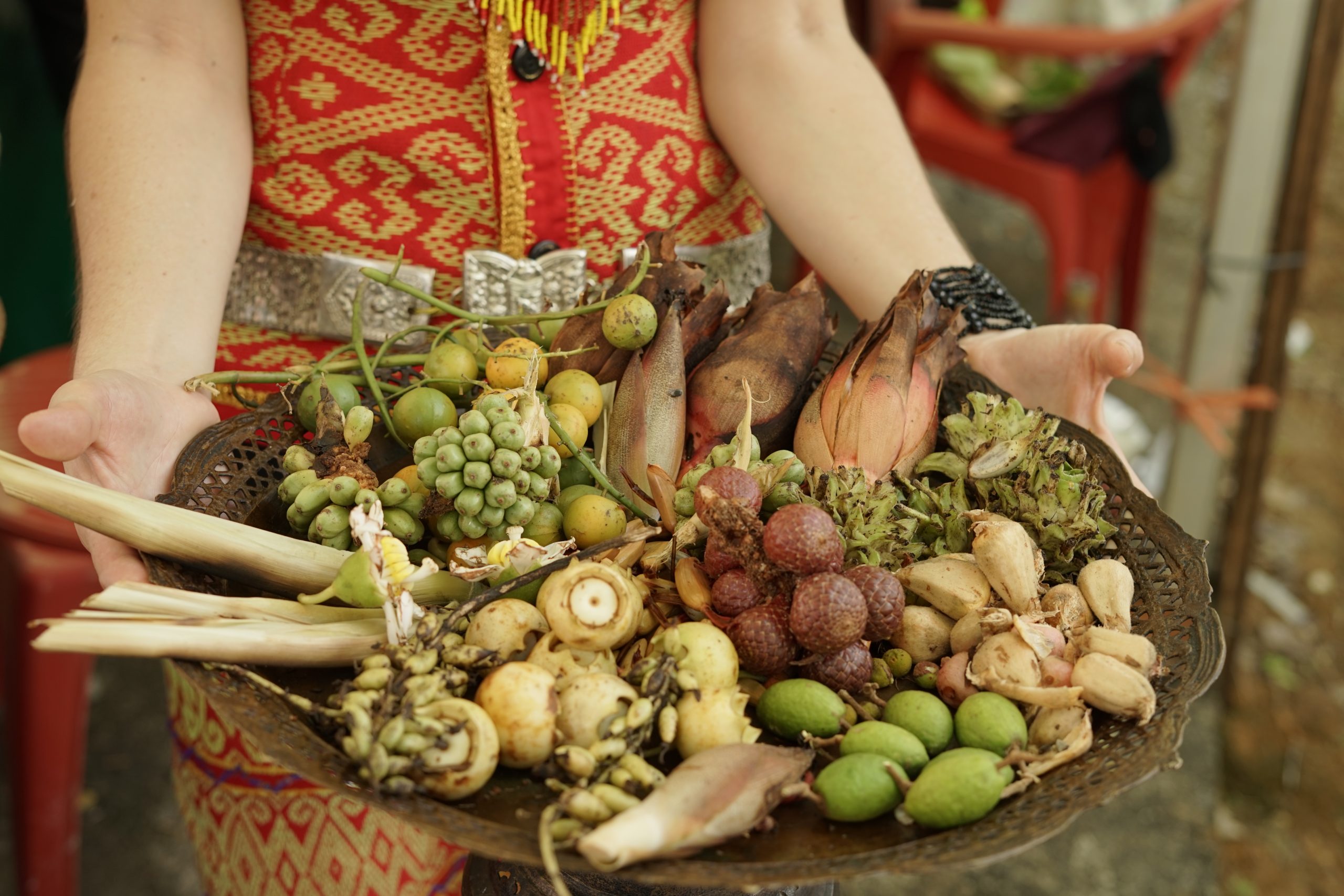In many Indonesian households, food has always been more than just sustenance. It is woven into family life and cultural identity, with kitchens filled by the aroma of freshly ground spices, sizzling sambal, and slow-cooked stews passed down through generations. Yet in recent years, this tradition has begun to shift. Over the past decade, long-prepared home meals have been increasingly replaced by the rapid, mass production of food we now call “fast food.” Its appeal is clear: convenience, affordability, and taste. For younger generations, especially students, these factors make fast food an easy part of their daily routine (Najib et al. 2025). In cities like Shenzhen, value is no longer judged solely by cost but also by the emotional comfort a meal provides, with Generation Z choosing foods that are both affordable and satisfying (Zhang 2024). The same story unfolds in Indonesia, where busy urban lifestyles leave little time to shop, cook, or clean, and fast food becomes the simplest solution. Cheaper than many healthier alternatives, it is engineered to trigger cravings and indulgence. At the same time, consumer engagement and sophisticated marketing amplify its dominance, with global chains adapting strategies across media platforms to remain competitive and in tune with changing tastes (Nugraha & Ramli 2024). Amidst this transformation in food culture, the question emerges: can traditional Indonesian food (which is rich in flavour that shapes its identity) continue to hold its ground, or will fast food reshape not only diets but cultural connections to food itself?
Fast food and processed food
Despite all the goodness that we crave from fast food, people neglect nutritional sufficiency, which is a vital aspect of our longevity. What many people don’t realise about fast food is how it quietly undermines health, as fast food contains more salt and sugar than your body needs in an entire day (silently increasing your risk of heart disease, high blood pressure, and diabetes) (Hawkes 2006). One study in Singapore revealed that regularly eating fast food has been linked to poor diet quality, inadequate nutrient intake, and increased abdominal obesity (Whitton et al., 2014). Most fast food items are made from ultra-processed ingredients, filled with preservatives, artificial flavours, and chemicals our bodies weren’t designed to digest (Monteiro et al., 2019). They might satisfy hunger at the moment, but they offer little “real“ nourishment. Over time, regularly eating these “empty calories” leaves many people overfed but undernourished, which results in a lack of fibre, vitamins, and minerals the body needs to truly thrive (Srour et al., 2019).
Fast food has become a big part of everyday life, but its constant promotion has created serious problems that often go unnoticed. One major issue is the rise in health problems like obesity, diabetes, and heart disease, especially among kids and low-income families, especially in developing countries (Popkins et al 2012), where wages are lower on average compared to developed countries (Li et al 2020). Fast food ads often make unhealthy food look fresh or healthy, which can confuse people about what good nutrition really means. Over time, this has also changed the way we eat, from healthy home-cooked meals to quick bite-sized takeaways that shift our eating preference to prioritise taste over nutrition. In Indonesia, this global trend is already visible. The country faces a double burden of malnutrition: about one in three children under five is stunted, while almost half of adults are overweight or obese (Nurwanti et al 2019). Chao (2022) describes how agro-industrial development and colonial legacies undermine Indigenous diets and introduce processed food systems. However, some rural communities still rely more on traditional diets built from local resources from their environment. These contrasts highlight why protecting and promoting traditional food practices is crucial for both public health and community resilience.

A small food stall selling fast food made from ultra-processed ingredients with cheap prices and distributed to remote villages. Kapuas Hulu. 2023. Photo by Hardiyanti.
What is slow-processed food?
In contrast to fast food and manufactured food, traditional food processing methods such as fermentation and smoking offer culturally embedded, health-promoting alternatives. Fermentation improves food safety, nutrient availability, and gut health through probiotic activity (Siddiqui et al., 2023). In addition, smoked fish products are nutritious, ready-to-eat foods valued for their flavour and appearance, while the combined effects of heat, drying, salting, and smoke help reduce spoilage and harmful bacteria (Belichovska, 2019). These slow processes produce flavourful, nutritious foods without relying on synthetic chemicals or industrial machinery, which can also be categorised as Slow Food. This philosophy is central to the global Slow Food movement, founded in Italy in 1986 as a response to the rise of fast food. Slow Food promotes food that is “good, clean, and fair,” advocating for biodiversity, ecological farming, and equitable food systems (Fader et al., 2022).

Food from tropical forest biodiversity in Kapuas Hulu, West Kalimantan, Indonesia. Photo by Hardiyanti
With networks in over 160 countries, the movement supports local producers, protects endangered traditional foods, and fosters food education and policy change to reshape global food systems toward sustainability. One example of Slow Food can be found in Indonesia, in Kapuas Hulu, West Kalimantan. Slow Food values are embodied in traditional fish preservation practices, which are used by the Iban community. These preservation practices include fermentation (pekasam) and smoking (salai) to store wild-caught freshwater fish, enhancing flavour and nutritional value while preserving cultural heritage (Agustini & Swasto, 2023). These practices reflect a food system that is not only resilient and ecological but also deeply rooted in local identity. In this article, we will break down the food preservation practices of fermenting and smoking.

Fresh fish catch from a healthy ecosystem in Kapuas Hulu, Photo by Hardiyanti
Pekasam
Pekasam is a traditional fermented fish dish usually made from freshwater species like tilapia and lampam fish. The preparation begins with cleaning the fish to remove slime, dirt, and unpleasant odours. It is then coated with salt, which draws out moisture, prevents early spoilage, and creates a suitable environment for beneficial microbes to grow while helping to stabilise the fish proteins (Ezzat et al., 2021). After salting, the fish is layered with ground roasted rice, brown sugar, and acidic fruits like tamarind. These not only add flavour but also start the fermentation process. The roasted rice provides carbohydrates for the microbes, gives a nutty aroma, and helps reduce strong fishy smells (Muryany et al., 2017). Fermentation usually takes two to five weeks, depending on fish size, with larger fish needing longer fermentation period. During this time, natural enzymes from the fish and microbes break down proteins into smaller peptides and amino acids, improving texture and taste.

Pekasam made from fermented fish. Photo by Hardiyanti
Nutritionally, pekasam is valued for its omega-3 fatty acids, particularly EPA and DHA, which support cardiovascular and brain health. These fatty acids are retained because the fermentation process uses low heat. Fermentation also boosts pekasam’s antioxidant properties through bioactive compounds that help neutralise free radicals and reduce oxidative stress, a factor linked to ageing and chronic disease (Cha & Yu, 2024). Lactic acid bacteria (LAB), especially Lactobacillus plantarum and L. pentosus, are key to the fermentation process. They convert sugars into lactic acid, lowering the pH to stop harmful microbes, preserve the fish, and offer probiotic benefits. These probiotics support digestive health, regulate the immune system, and may help reduce risks of infections, inflammation, and related metabolic or mental health problems (Amin et al., 2025).
Despite these benefits, fermentation must be carefully managed. Poor conditions may allow harmful bacteria to produce biogenic amines such as histamine and tyramine, which can cause allergic reactions or headaches. However, research shows that properly prepared pekasam generally has lower levels of these compounds compared to other fermented fish products, making it relatively safe to consume (Khudair et al., 2023).
Salai

Smoked Fish at Putussibau Traditional Market. Photo by Alexander Pomper
Salai is more than just a cooking method. It is a living symbol of the Iban people’s deep connection with nature, survival, and community. What began as a practical way to preserve fish in Borneo’s humid climate has evolved into a cultural cornerstone: part culinary tradition, part ancestral knowledge, and fully integrated into daily life. For the Iban and other Dayak communities along the rivers of Sarawak and West Kalimantan, fish have always been a reliable year-round source of protein. Long before refrigeration or modern markets, salai provided a trusted way to extend the shelf life of river fish and secure food for the seasons ahead. The word itself, meaning “to smoke” or “to grill,” reflects a mastery of fire and wood that turned fresh catch into long-lasting delicacies. The process is slow and deliberate. Fresh fish such as jurung, baung, or tamban are first cleaned, salted, and pre-dried before being smoked over hardwood or mangrove fires. Smoking can last from just a few hours to up to 48 hours, as in the famous ikan tahai of Lawas. The result is a bronze coloured, smoky fish that can be stored for weeks without refrigeration.
Although research on salai itself is limited, studies on smoked fish in general highlight important nutritional and preservative benefits. Mielcarek et al. (2020) found that smoked fish usually contains more protein than raw or pickled fish, though it also has a higher salt content due to curing and smoking. Similarly, Kiczorowska et al. (2019) reported that smoking increases levels of crude protein and ash, while reducing fat and certain minerals, in both freshwater and marine fish. In Ambon, for example, traditional smoked skipjack has been shown to contain about 31.97 percent protein, 4.38 percent fat, and 173 calories per 100 grams, making it a valuable source of dietary protein (Rieuwpassa et al., 2023). Beyond nutrition, smoking also reduces bacterial growth by applying heat and drying to the food, and by imparting antimicrobial and antioxidant compounds such as polyphenols, carbonyl compounds, and organic acids from the smoke. These compounds inhibit microbial activity and reduce spoilage, while the dehydration effect of smoke decreases the water available for bacteria, thus extending shelf life and increasing food safety (Hagos, 2021).
Salai is far more than preserved fish. It is also a comfort food, a ceremonial offering, and even folk medicine. Smoked fish is used in nostalgic dishes like terung Dayak soup and is central in harvest festivals, weddings, and postpartum care, where its warmth and purity are believed to aid recovery. Economically, salai sustains rural cottage industries and local markets. Socially, it strengthens community ties through gifting and shared meals. For many urban Iban, the familiar taste of salai brings them home, evoking memories of rivers, longhouse kitchens, and elders tending the fire.
Challenges and Future of the Traditional Food System
Despite their health and cultural value, traditions like pekasam and salai face growing challenges in Indonesia today. Changing tastes and globalisation mean that younger generations often prefer fast food or instant meals over slow, labour-intensive recipes. Urbanisation and migration also make it harder for elders to pass on their knowledge, putting traditional preparation skills at risk. In many areas, the decline of wild fish stocks further threatens these practices. Communities are often forced to rely on farmed species, which are seen as less flavorful and less connected to heritage. At the same time, new efforts are emerging to protect and revitalise food heritage. Foundations and chefs are documenting endangered recipes, while youth-led cooperatives and food festivals are helping bring traditional foods to wider audiences. By adapting heritage dishes to modern formats and engaging young people, these initiatives aim to keep Indonesia’s culinary identity alive in a fast-changing world.
In a society shaped by convenience and instant gratification, traditional methods like pekasam and salai offer a powerful alternative. They are rooted in health, heritage, and sustainability, reflecting a food culture that values time, care, and community over speed and uniformity. This philosophy connects closely with the Slow Food movement, which promotes food that is “good, clean, and fair” while supporting biodiversity, local traditions, and small-scale producers. The use of fermentation and smoking by communities such as the Iban shows how food can serve more than just hunger. These methods extend shelf life, improve nutritional value, and preserve cultural identity. Beyond practical benefits, they offer a meaningful alternative to highly processed, industrial food systems. As the world faces challenges in food security and public health, embracing Slow Food practices like pekasam and salai not only strengthens our connection to what we eat but also builds more resilient and culturally grounded food systems.
References
- Agustini, S. R., & Swasto, D. F. (2023). Identification of local wisdom in community culture in Danau Sentarum National Park. Built Environment Studies, 4(2), 14–24. https://doi.org/10.22146/best.v4i2.6681
- Amin, M. R., Biswas, A. P., Tasnim, M., Islam, M. N., & Azam, M. S. (2025). Probiotics and their applications in functional foods: A health perspective. Applied Food Research, 5(2), 101193. https://doi.org/10.1016/j.afres.2025.101193
- Belichovska, K., Belichovska, D., & Pejkovski, Z. (2019). Smoke and smoked fish production. Meat Technology, 60(1), 37–43. https://doi.org/10.18485/meattech.2019.60.1.6
- Cha, Y.-J., & Yu, D. (2024). Health benefits and functions of salt-fermented fish. Journal of Ethnic Foods, 11(1), 34. https://doi.org/10.1186/s42779-024-00251-5
- Chao, S. (2022). Gastrocolonialism: The intersections of race, food, and development in West Papua. The International Journal of Human Rights, 26(5), 811–832. https://doi.org/10.1080/13642987.2021.1968378
- Ezzat, M. A., Ghazali, M. H., Roselina, K., & Zare, D. (2021). Organic acid composition and consumer acceptability of fermented fish produced from black tilapia (Oreochromis mossambicus) and Javanese carp (Puntius gonionotus) using natural and acid-assisted fermentation. Food Research, 5(2), 262–271. https://doi.org/10.26656/fr.2017.5(2).583
- Fader, B., Mesmain, M., & Desjardins, E. (2022). Critical food guidance from the Slow Food movement: The relationship barometer. Canadian Food Studies, 9(1). https://doi.org/10.15353/cfs-rcea.v9i1.509
- Hagos, L. (2021). Smoking methods and microbiological characteristics of smoked fishes: A review. Journal of Food and Nutrition Sciences, 9(5), 113. https://doi.org/10.11648/j.jfns.20210905.11
- Hawkes, C. (2006). Uneven dietary development: Linking the policies and processes of globalisation with the nutrition transition, obesity and diet-related chronic diseases. Globalization and Health, 2(1), 4. https://doi.org/10.1186/1744-8603-2-4
- Khudair, A. J. D., Mohd Zaini, N. S., Jaafar, A. H., Meor Hussin, A. S., Wan-Mohtar, W. A. A. Q. I., & Abd Rahim, M. H. (2023). Production, organoleptic, and biological activities of Belacan (shrimp paste) and Pekasam (fermented freshwater fish), the ethnic food from the Malay Archipelago. Sains Malaysiana, 52(4), 1217–1230. https://doi.org/10.17576/jsm-2023-5204-14
- Kiczorowska, B., Samolińska, W., Grela, E. R., & Bik-Małodzińska, M. (2019). Nutrient and mineral profile of chosen fresh and smoked fish. Nutrients, 11(7), 1448. https://doi.org/10.3390/nu11071448
- Li, L., Sun, N., Zhang, L., Xu, G., Liu, J., Hu, J., Zhang, Z., Lou, J., Deng, H., Shen, Z., & Han, L. (2020). Fast food consumption among young adolescents aged 12–15 years in 54 low- and middle-income countries. Global Health Action, 13(1), 1795438. https://doi.org/10.1080/16549716.2020.1795438
- Mielcarek, K., Puścion-Jakubik, A., Gromkowska-Kępka, K. J., Soroczyńska, J., Naliwajko, S. K., Markiewicz-Żukowska, R., Moskwa, J., Nowakowski, P., Borawska, M. H., & Socha, K. (2020). Proximal composition and nutritive value of raw, smoked and pickled freshwater fish. Foods, 9(12), 1879. https://doi.org/10.3390/foods9121879
- Monteiro, C. A., Cannon, G., Levy, R. B., Moubarac, J.-C., Louzada, M. L., Rauber, F., Khandpur, N., Cediel, G., Neri, D., Martinez-Steele, E., Baraldi, L. G., & Jaime, P. C. (2019). Ultra-processed foods: What they are and how to identify them. Public Health Nutrition, 22(5), 936–941. https://doi.org/10.1017/S1368980018003762
- Muryany, I., Salwany, I., & Fadilah, N. (2017). Identification and characterization of lactic acid bacteria isolated from Malaysian fermented fish (Pekasam). International Food Research Journal, 24(2), 868–875.
- Najib, A. D. M. A., Nawi, M. Z. M., & Azmar, M. F. (2025). A preliminary study on students’ behaviour, knowledge and perceptions towards fast food consumption. International Journal of Academic Research in Progressive Education and Development, 14(2), 1076–1084. https://doi.org/10.6007/IJARPED/v14-i2/25462
- Nugraha, R. N., & Ramli, M. (2024). Strategic management analysis at McDonald’s fast food restaurant, Perdatam Pasar Minggu. West Science Interdisciplinary Studies, 2(4), 881–890. https://doi.org/10.58812/wsis.v2i04.810
- Nurwanti, E., Hadi, H., Chang, J.-S., Chao, J. C.-J., Paramashanti, B. A., Gittelsohn, J., & Bai, C.-H. (2019). Rural–urban differences in dietary behavior and obesity: Results of the Riskesdas study in 10–18-year-old Indonesian children and adolescents. Nutrients, 11(11), 2813. https://doi.org/10.3390/nu11112813
- Popkin, B. M., Adair, L. S., & Ng, S. W. (2012). Global nutrition transition and the pandemic of obesity in developing countries. Nutrition Reviews, 70(1), 3–21. https://doi.org/10.1111/j.1753-4887.2011.00456.x
- Rieuwpassa, F., Tapotubun, A. M., Matrutty, T. E. A. A., Nanlohy, H., & Savitri, I. K. E. (2023). Nutritional composition of smoked skipjack produced in Ambon. IOP Conference Series: Earth and Environmental Science, 1207(1), 012010. https://doi.org/10.1088/1755-1315/1207/1/012010
- Siddiqui, S. A., Erol, Z., Rugji, J., Taşçı, F., Kahraman, H. A., Toppi, V., Musa, L., Di Giacinto, G., Bahmid, N. A., Mehdizadeh, M., & Castro-Muñoz, R. (2023). An overview of fermentation in the food industry — Looking back from a new perspective. Bioresources and Bioprocessing, 10(1), 85. https://doi.org/10.1186/s40643-023-00702-y
- Srour, B., Fezeu, L. K., Kesse-Guyot, E., Allès, B., Méjean, C., Andrianasolo, R. M., Chazelas, E., Deschasaux, M., Hercberg, S., Galan, P., Monteiro, C. A., Julia, C., & Touvier, M. (2019). Ultra-processed food intake and risk of cardiovascular disease: Prospective cohort study (NutriNet-Santé). BMJ, 365, l1451. https://doi.org/10.1136/bmj.l1451
- Whitton, C., Ma, Y., Bastian, A. C., Chan, M. F., & Chew, L. (2014). Fast-food consumers in Singapore: Demographic profile, diet quality and weight status. Public Health Nutrition, 17(8), 1805–1813. https://doi.org/10.1017/S1368980013001997
- Zhang, Y. (2024). A study on the fast food consumption behavior of Generation Z in Shenzhen: A case study of the Tastien brand. Interdisciplinary Humanities and Communication Studies, 1(10). https://doi.org/10.61173/8vqdnk21
Artikel pernah diterbitkan pada laman Medium, 19 September 2025.








